USA. Part I. The American InterfaceMapDecember 30, 2007 — January 25, 2008 The only thing America doesn’t have is freedom. America lives by the rules and the law. This is very convenient. The terms are the same for everyone. Being a law-abiding citizen is encouraged; violators are persecuted. Compliance with rules and laws is achieved using two approaches: physical and logical. A tall fence with barbed wire doesn’t just communicate that entry is forbidden—it also prevents you from entering. The most obvious example of physical compliance with the law is the American highway system. All the highways in the country are constructed in such a way that it’s impossible to drive into oncoming traffic. Traffic lanes going the opposite way are either situated a hundred meters to the left or separated by an impenetrable barrier (of course, smaller city streets simply have pavement markings to separate traffic). 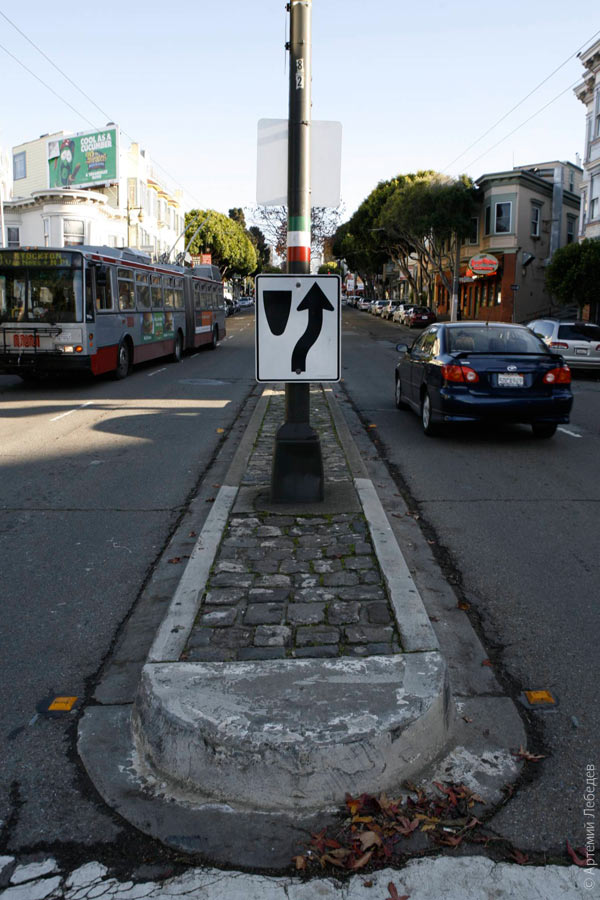 The US is full of physical barriers. In this respect, it can easily compare to any state that’s commonly referred to as totalitarian. Starting with the ubiquitous fences and ending with gates that can be used to block off any highway at any time. They’re not used every day, but they exist everywhere. Still, the physical obstacles aren’t as interesting as the logical ones, which we will now examine. Words have meaning and power in the US. For this reason, everything everywhere is always stated out loud, written down as a list of rules, and displayed as instructions. Depending on the desired outcome, the instructions can be straightforward or they can be convoluted. For example, someone in an SUV will end up paying around for half an hour of parking here. Because first of all, there’s the tax, second, the rate will turn out to be misleading, you’ll have to pay extra for your oversize vehicle, and so on. 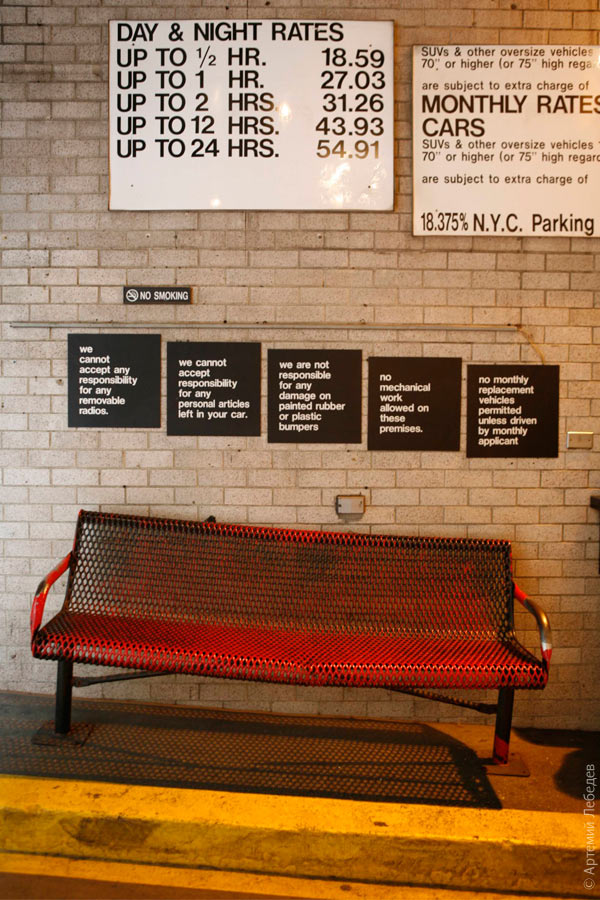 This is why Americans have the concept of "fine print"—it’s used for the non-promotional part of all promotional materials. What’s more, it’s actually possible to enter into a relationship based on the principle of “if you remove this sticker, you agree to such-and-such.” No sticker can ever hold such power in Russia as it does here. The terms at a parking lot in Spokane inform you that by parking here, you are entering into an agreement with the operator of the lot. 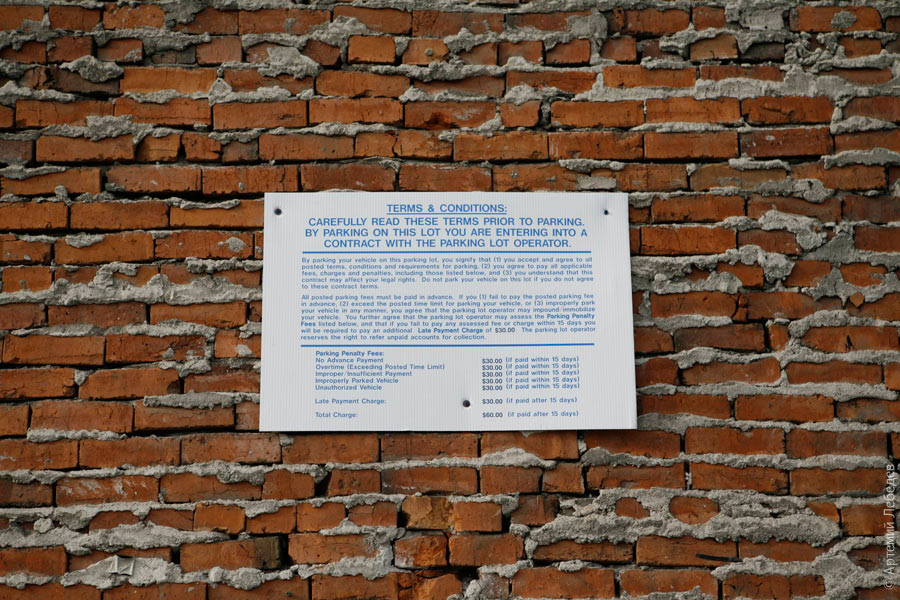 A payment collection box at another parking lot. You not only have to put a folded-up bill in the slot, you also have to push it through with a key or special widget (which is dangling from the wire). If you don’t push it all the way through, someone might fish it out, and then your parking will be unpaid for. 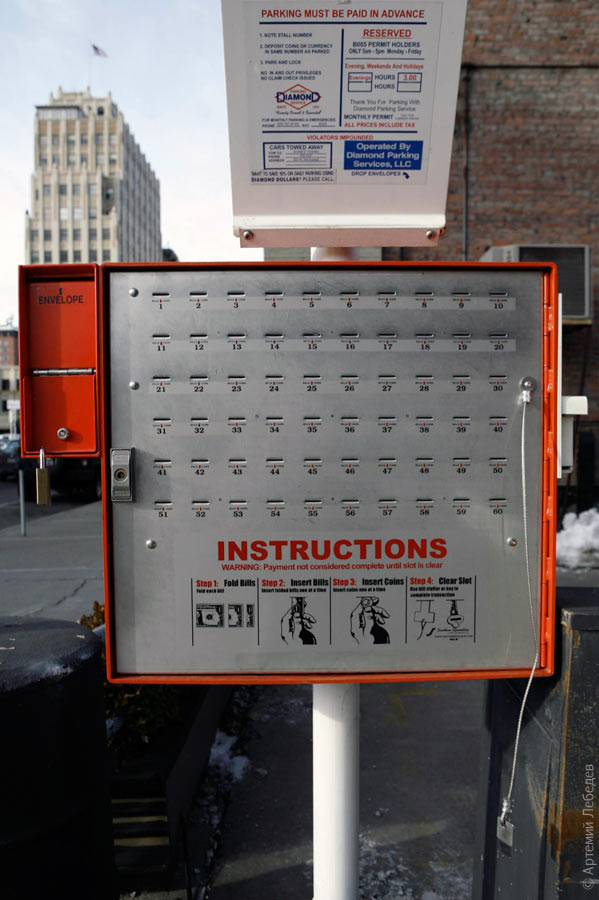 Every establishment has an official occupancy limit. A restaurant owner obviously won’t object if a bunch of people pack into his restaurant for a party. But if he needs to turn someone away, he can always point to the piece of paper in the corner which says that the law prohibits more than 40 people from being in this specific place at one time. 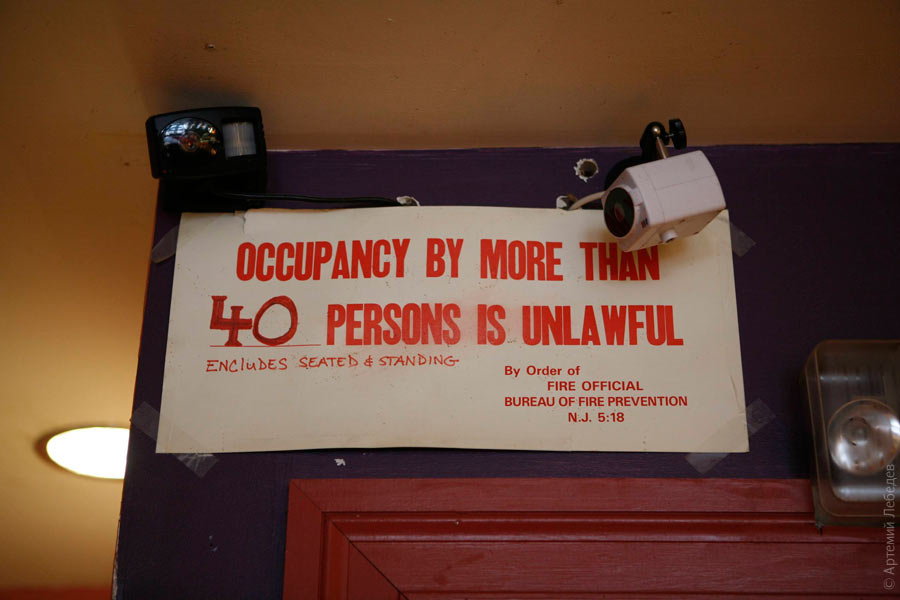 Some messages, despite being highly abstract, are easily understood by most Americans. “Unnecessary noise prohibited.” Meaning, you can honk at a pedestrian who jumps out in front of you, but you can’t blast loud music from your car. 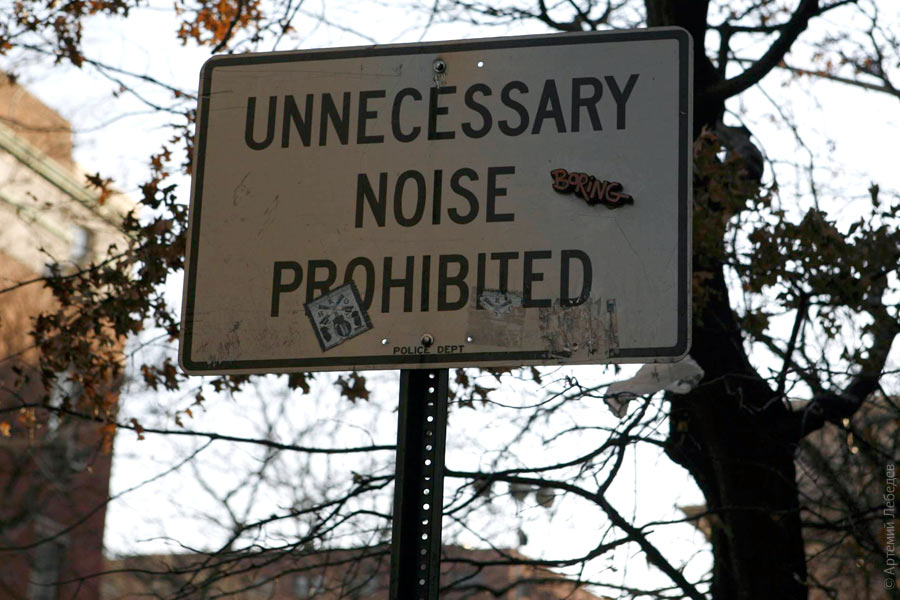 Of course, not all warnings rely solely on people’s conscience. Some come with very specific consequences. For instance, anyone who blocks the intersection (having miscalculated the speed of traffic flow) will get a fine and two points on their license (luckily, there’s nowhere to write in points on a Russian license). 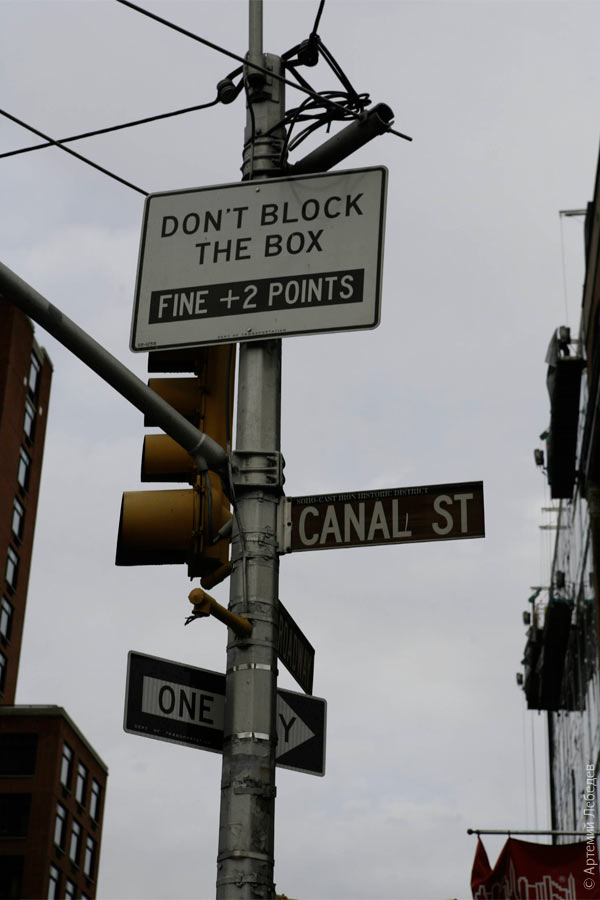 If all Americans were perfect and law-abiding, there would be no jails in the country. Only certain places designated as safe cities and good neighborhoods can be considered safe in America. Therefore, people generally try to avoid walking around on the streets, appearing in unfamiliar places, or going outside at night without need. To make sure everyone knows their place, rich (i.e. white) neighborhoods have signs which warn that all suspicious (i.e. black) persons will be reported. The presence of this sign allows any old lady to call the cops if she sees someone she doesn’t like. Then again, Americans are taught to snitch on one another from an early age—it isn’t considered shameful. 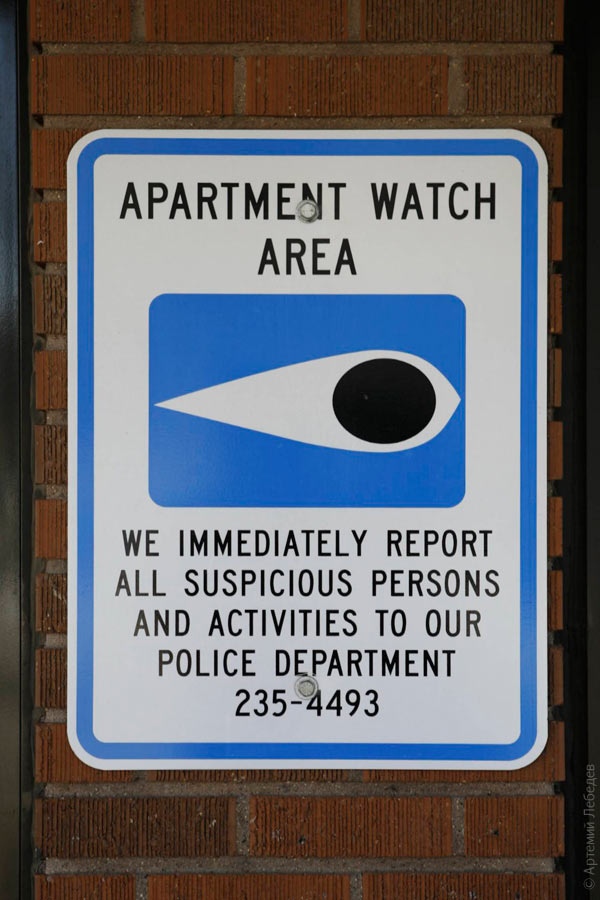 Half the gas stations are locked up at night because they often get robbed. And if the cash register is locked at night, you can only pay with a card. And European cards don’t work at half the gas stations because you have to enter your ZIP code. And how many non-American credit card owners remember their zip code? If you remember yours, great. In any case, no one has accounted for the existence of six-digit foreign zip codes here. Even in the daytime, every gas station has a “pay first, eat later” system. Hence the sign threatening you with the loss of your license if you fail to pay. Although there aren’t any places left where you could actually fuel up without paying. 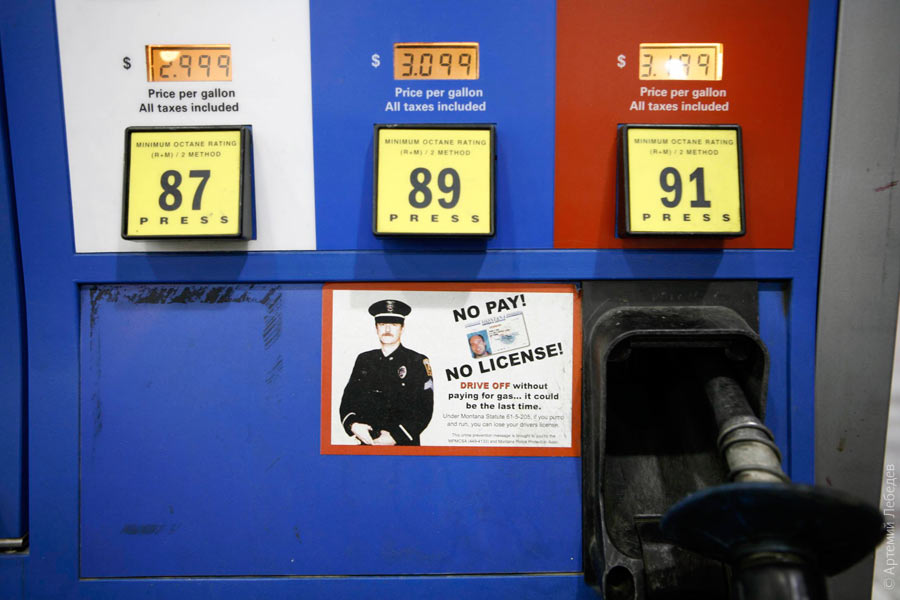 At half the gas stations, there’s just one hose which dispenses three different types of fuel. You select the fuel type by pushing a button. Sometimes there’s separate second hose for diesel (if it’s available). It’s a fact that most countries let people sit on the lawns and this doesn’t lead to them getting destroyed. You can’t sit on the historic stairs, however.  All street parking spots have very specific rules and hours. There are different rules on every sign. Here, you can only park at 90 degrees (which is already an odd instruction in itself) for no longer than two hours between 8 a.m. and 9 p.m. Monday through Saturday. The only exception is vehicles with area A permits (some kind of local San Francisco thing). You’re expected to read through and make sense of all this essentially on the go—the “No Stopping” sign next to this one means you have no time to think. 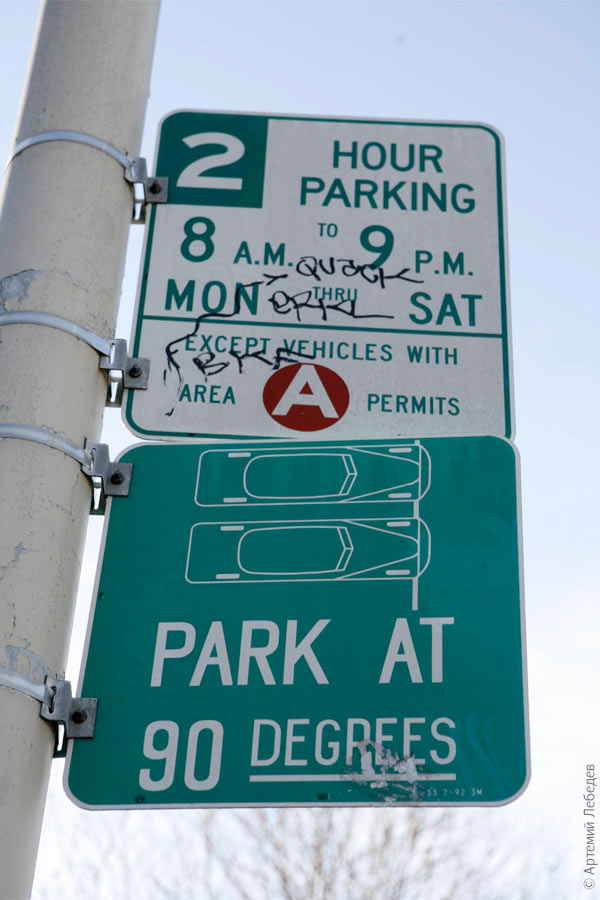 Of course, there are also special cases, when a driver’s slow-wittedness could cost people their lives. Then they hang up a huge red sign with two “Do Not Enter” symbols and big letters that say “WRONG WAY.” This is a last-resort measure to prevent collisions on a poorly planned intersection. But of course, they try to prevent the possibility of such situations in the first place. This is a rare example. 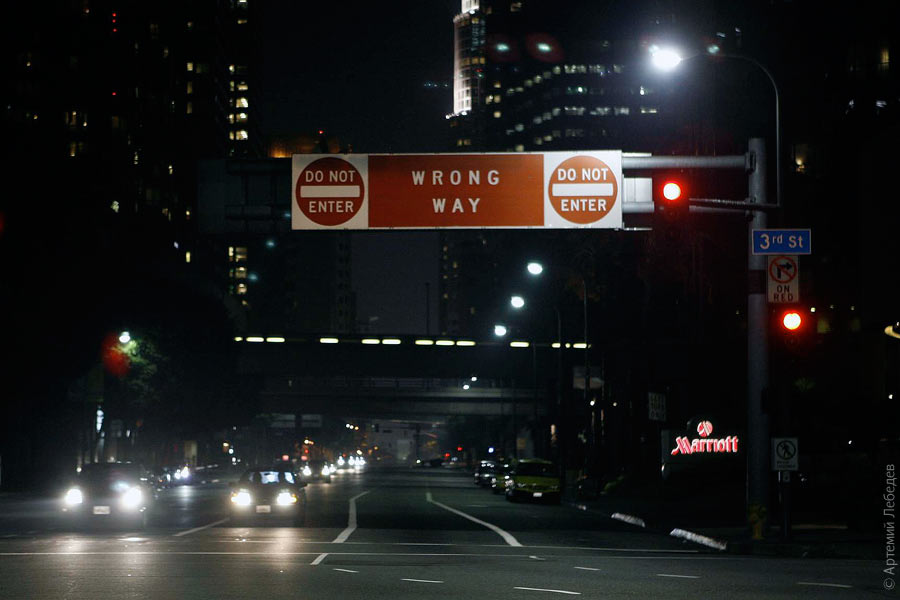 You can find spray-painted pavement markings in the cities: these are traces of telecommunications workers’ ruminations and instructions. Which shaft the phone company’s end is supposed to go into, what tunnel the TV cable will be laid through—all this can be gleaned from a quick glance at the road. The idea itself is excellent. It’s just a shame that the paint doesn’t wash off for years. 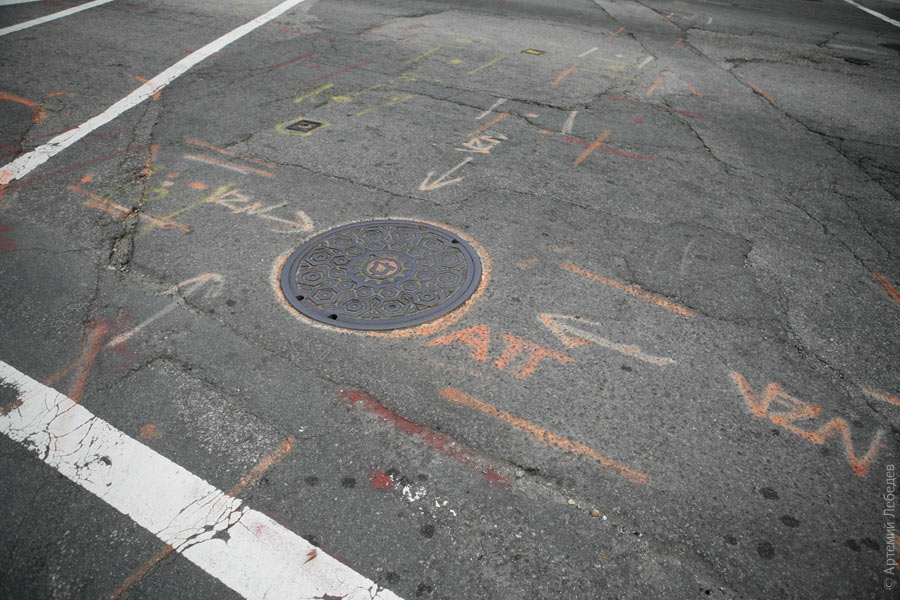 One of the things that surprised me most was the American emergency vehicle lighting system. Even the puniest vehicle is lit up like a Christmas tree. And when there’s an ambulance, cops or a fire truck coming down the street, it’s an all-out mobile rave. 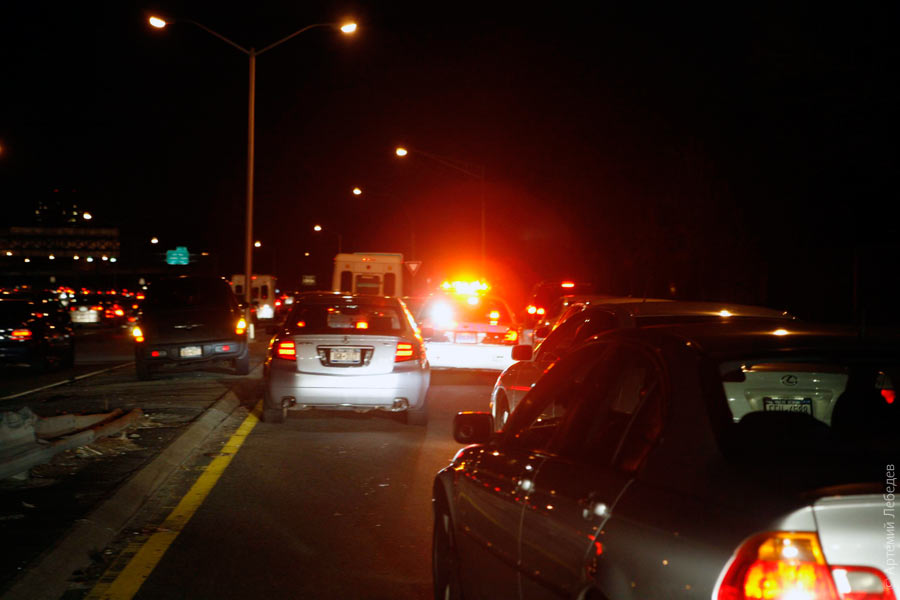 Until this trip, I was convinced that only Taiwanese emergency vehicles were prone to an excessive obsession with various lights, strobes, flashers, reflectors, and spotlights. Well, what you see in Taiwan is just child’s play compared to the US. The writing on the hood is a mirror image so that it can be read properly in a rearview mirror. 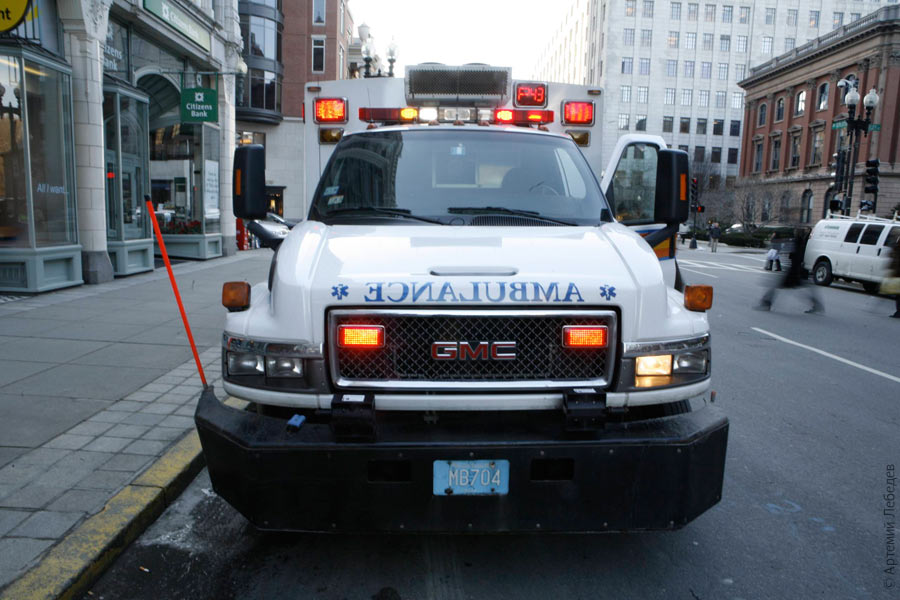 Every passenger-side rear-view mirror in every car is etched with the warning “Objects in mirror are closer than they appear.” In this case, the cop studying my papers is closer than he appears. European drivers generally don’t even suspect that every car has a wide-angle rear-view mirror on the passenger side, yet somehow they survive without the warning. 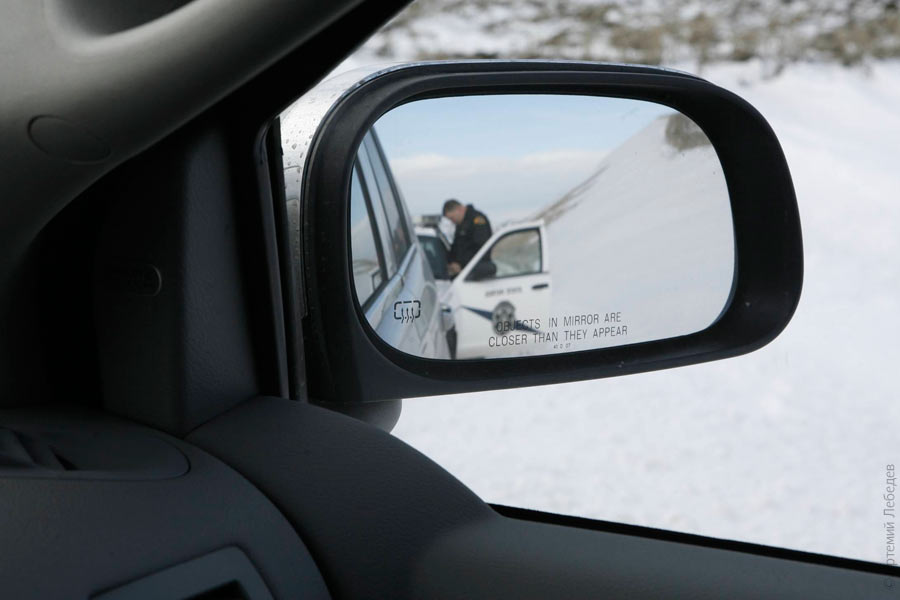 Another important national feature is the love of sirens. Nothing warms the cockles of a firefighter’s or paramedic’s heart more than a good ol’ wailing siren on the roof. The louder, the better. Ideally at 3 a.m. in a residential area. You can always hear a siren somewhere in the distance in every populated place at night. This isn’t done solely for safety and track-clearing purposes (drivers here immediately pull over at the sound of a siren, even if they’re on the opposite side of the street). This is done so that the taxpayer, cozily tucked in under the covers, knows that his tax dollars are at work even at night. And the basis of the American interface is a message which says that if a light is on or blinking, something is happening somewhere. For example: if this signal starts flashing, it means a train is approaching. After all, not everyone would have the wherewithal to turn their head and notice the train otherwise. Especially at a pedestrian crossing that’s already accordingly equipped with a little white man (they don’t use green ones here). 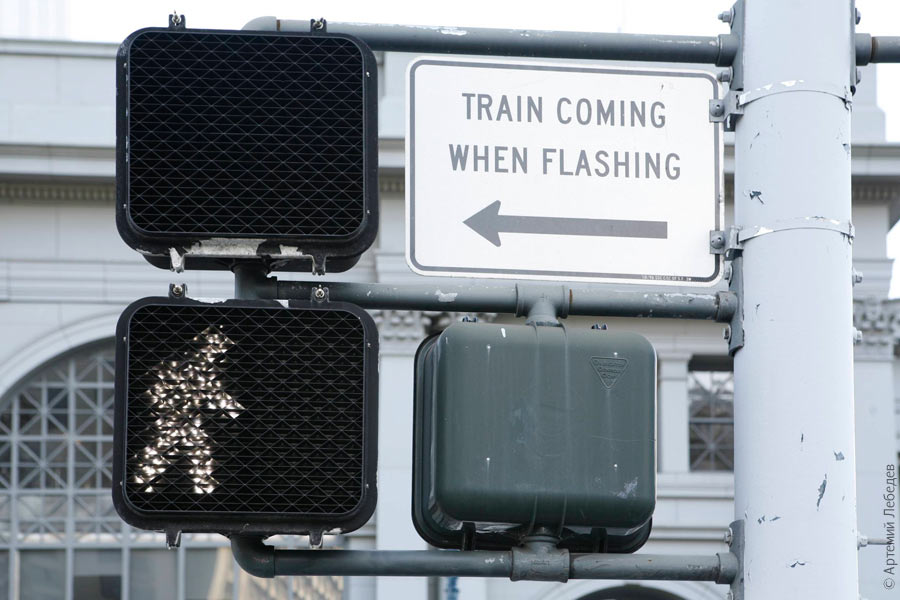 A taxi. The special light on the trunk is accompanied by a caption explaining its purpose. It actually lights up on the side the passenger is exiting from.  Or let’s say someone gets stuck in an elevator and calls for help. There’s an LED light for that, too. 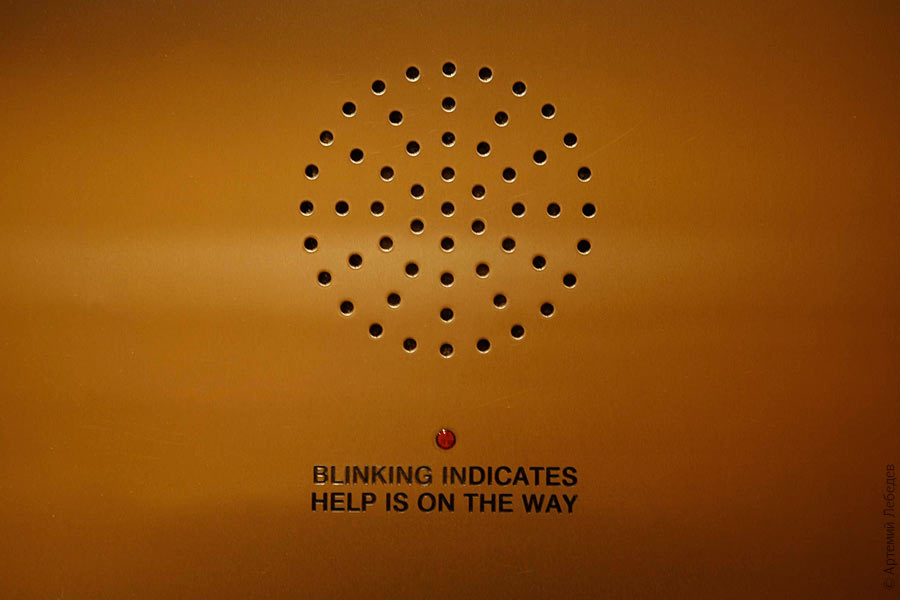 This is an important difference from other cultures, where it’s sufficient to simply turn on a light with the corresponding message written on it. |